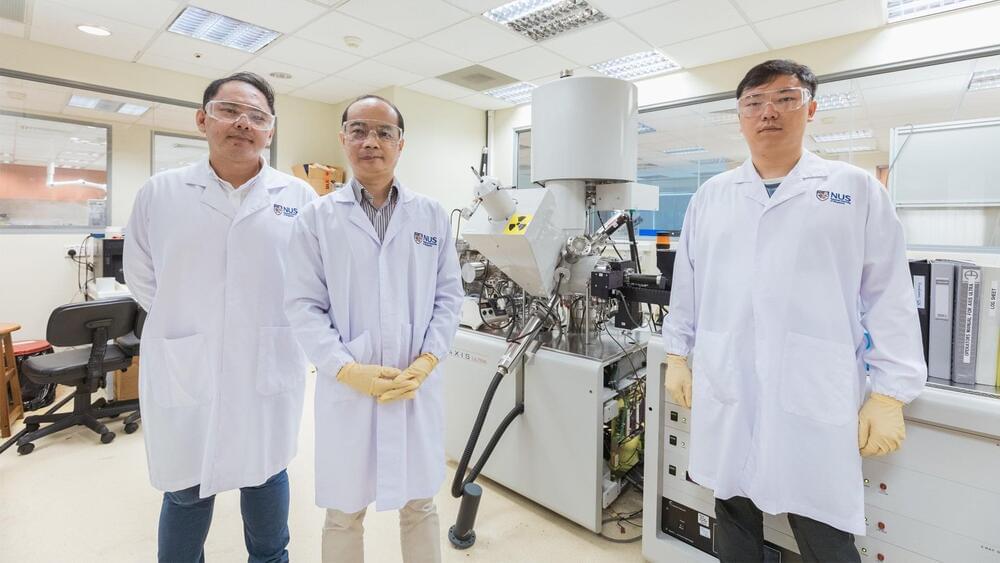Newly-launched Massachusetts biomanufacturing facility will be something like a conveyor belt from the academic bench to the early startup.


The Aging and Drug Discovery Conference (ARDD) 2022 is pleased to present Alex Zhavoronkov from Insilico, with the talk A case study of the application of Pharma. AI platform for discovery and development of dual-purpose therapeutics targeting aging and disease.
Held in Copenhagen at the glorious Ceremonial Hall, this meeting gathers the most prominent figures of the aging and longevity research field, from scientists to clinicians, investors, developers, and everything in between. The fast growth of the conference is evidence of its great quality of it. In 2022 we had around 400 people on-site, and many others joined through the web.
To find out more check www.agingpharma.org #ARDD #ARDD2022 #Longevity


A compound that both inhibits the MRSA superbug and renders it more vulnerable to antibiotics in lab experiments has been discovered by researchers at the University of Bath in the UK.
Antibiotic resistance poses a major threat to human health around the world, and Staphylococcus aureus has become one of the most notorious multidrug-resistant pathogens. Led by Dr. Maisem Laabei and Dr. Ian Blagbrough at the University of Bath, scientists have discovered a compound that both inhibits the Methicillin-resistant Staphylococcus aureus (MRSA) superbug and renders it more vulnerable to antibiotics.
Staphylococcus aureus (staph) is a type of bacteria found on people’s skin. Staph bacteria are usually harmless, but they can cause serious infections that can lead to sepsis or death. Methicillin-resistant Staphylococcus aureus (MRSA) is a cause of staph infection that is difficult to treat because of resistance to some antibiotics.

A team of researchers from the National University of Singapore (NUS) have made a serendipitous scientific discovery that could potentially revolutionize the way water is broken down to release hydrogen gas—an element crucial to many industrial processes.
The team, led by Associate Professor Xue Jun Min, Dr. Wang Xiaopeng and Dr. Vincent Lee Wee Siang from the Department of Materials Science and Engineering under the NUS College of Design and Engineering (NUS CDE), found that light can trigger a new mechanism in a catalytic material used extensively in water electrolysis, where water is broken down into hydrogen and oxygen. The result is a more energy-efficient method of obtaining hydrogen.
This breakthrough was achieved in collaboration with Dr. Xi Shibo from the Institute of Sustainability for Chemicals, Energy and Environment under the Agency for Science, Technology and Research (A*STAR); Dr. Yu Zhigen from the Institute of High Performance Computing under A*STAR; and Dr. Wang Hao from the Department of Mechanical Engineering under the NUS CDE.
Lex Fridman Podcast full episode: https://www.youtube.com/watch?v=cdiD-9MMpb0
Please support this podcast by checking out our sponsors:
- Eight Sleep: https://www.eightsleep.com/lex to get special savings.
- BetterHelp: https://betterhelp.com/lex to get 10% off.
- Fundrise: https://fundrise.com/lex.
- Athletic Greens: https://athleticgreens.com/lex to get 1 month of fish oil.
GUEST BIO:
Andrej Karpathy is a legendary AI researcher, engineer, and educator. He’s the former director of AI at Tesla, a founding member of OpenAI, and an educator at Stanford.
PODCAST INFO:
Podcast website: https://lexfridman.com/podcast.
Apple Podcasts: https://apple.co/2lwqZIr.
Spotify: https://spoti.fi/2nEwCF8
RSS: https://lexfridman.com/feed/podcast/
Full episodes playlist: https://www.youtube.com/playlist?list=PLrAXtmErZgOdP_8GztsuKi9nrraNbKKp4
Clips playlist: https://www.youtube.com/playlist?list=PLrAXtmErZgOeciFP3CBCIEElOJeitOr41
SOCIAL:
- Twitter: https://twitter.com/lexfridman.
- LinkedIn: https://www.linkedin.com/in/lexfridman.
- Facebook: https://www.facebook.com/lexfridman.
- Instagram: https://www.instagram.com/lexfridman.
- Medium: https://medium.com/@lexfridman.
- Reddit: https://reddit.com/r/lexfridman.
- Support on Patreon: https://www.patreon.com/lexfridman
Join us on Patreon!
https://www.patreon.com/MichaelLustgartenPhD
TruDiagnostic Discount Link (Epigenetic Testing)
CONQUERAGING!
https://bit.ly/3Rken0n.
Bristle Discount Link (Oral microbiome quantification):
ConquerAging15
https://www.bmq30trk.com/4FL3LK/GTSC3/
Cronometer Discount Link (Daily diet tracking):
https://shareasale.com/r.cfm?b=1390137&u=3266601&m=61121&urllink=&afftrack=
If you’d like to support the channel, you can do that with Buy Me A Coffee!
https://www.buymeacoffee.com/mlhnrca.
The Excel file to calculate Levine’s Biological Age is embedded in this link from my website:
Thanks to Scopely for sponsoring this video — Download Star Trek Fleet Command on iOS & Android and battle in the Star Trek universe here: https://pixly.go2cloud.org/SH3UL
Check out how it would launch here:
https://www.youtube.com/watch?v=qXxl5Ef5lFg.
Discord: https://discord.gg/WXb565P9nQ
My News Channel: https://www.youtube.com/channel/UCD3cl0MmX6fGZzeAHt4JWJA
Join this channel to get access to perks:
https://www.youtube.com/channel/UCpM4zrZ9c_apiEj6CApj2yw/join.
Patreon:
https://www.patreon.com/foundandexplained
UK and Russia are once again at loggerheads, this is after a report emerged that former Prime Minister Liz Truss cell phone was hacked when se was the Foreign Minister. UK Opposition politicians are now calling for an investigation after Daily Mail reported that suspected Kremlin agents were behind the hawk.
#UK #Russia #liztruss.
About Channel:
WION The World is One News, examines global issues with in-depth analysis. We provide much more than the news of the day. Our aim to empower people to explore their world. With our Global headquarters in New Delhi, we bring you news on the hour, by the hour. We deliver information that is not biased. We are journalists who are neutral to the core and non-partisan when it comes to the politics of the world. People are tired of biased reportage and we stand for a globalised united world. So for us the World is truly One.
Please keep discussions on this channel clean and respectful and refrain from using racist or sexist slurs as well as personal insults.
Check out our website: http://www.wionews.com.
Short clip of Michael Levin, an American developmental and synthetic biologist at Tufts University, talking about Planarian and their capacity to regenerate their organs indefinetely, which makes then biologically immortal.
The remarks where given during a fascinating three-hour-long conversation with Lex Fridman that was aired on october 1st, 2022.
Lex Fridman is a Russian-American computer scientist, artificial intelligence researcher, and podcast host.
To watch the entire conversation clic here: https://youtu.be/p3lsYlod5OU